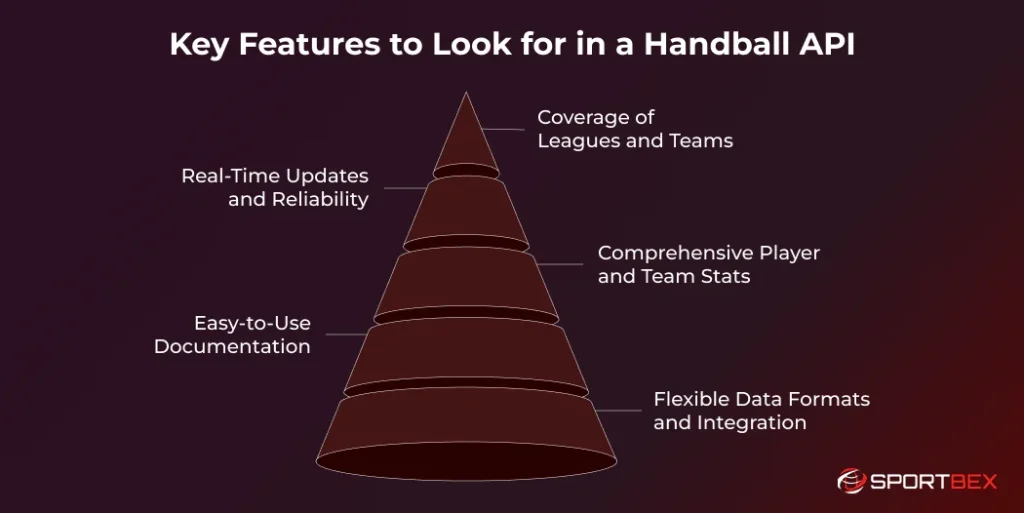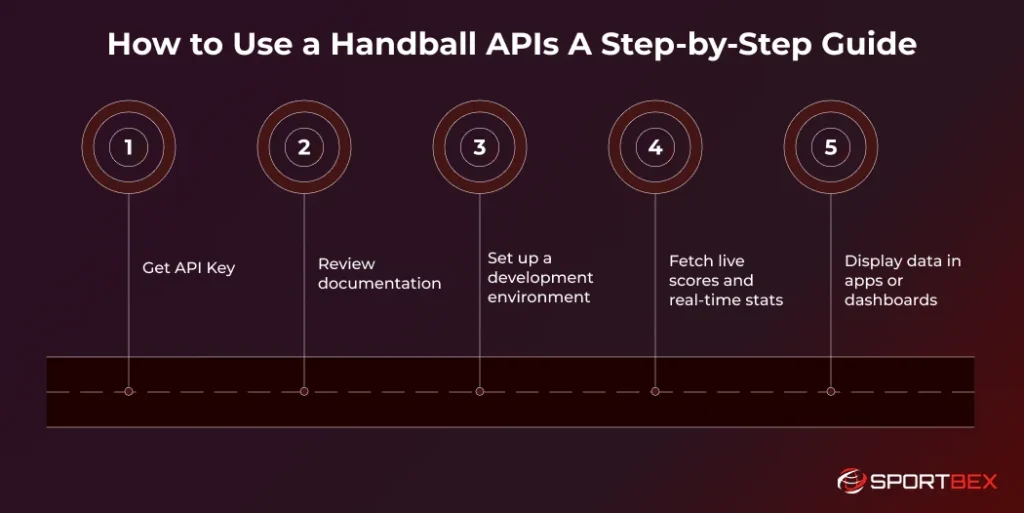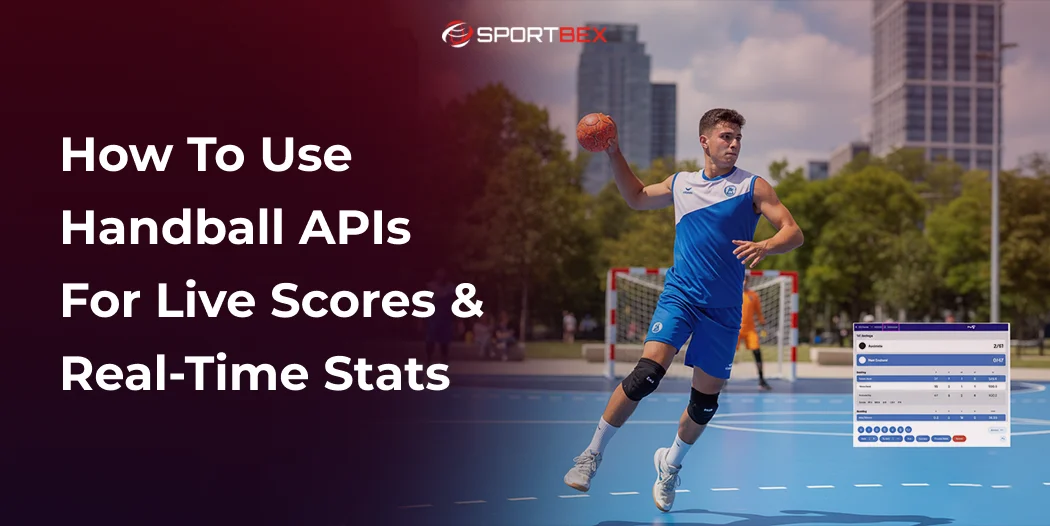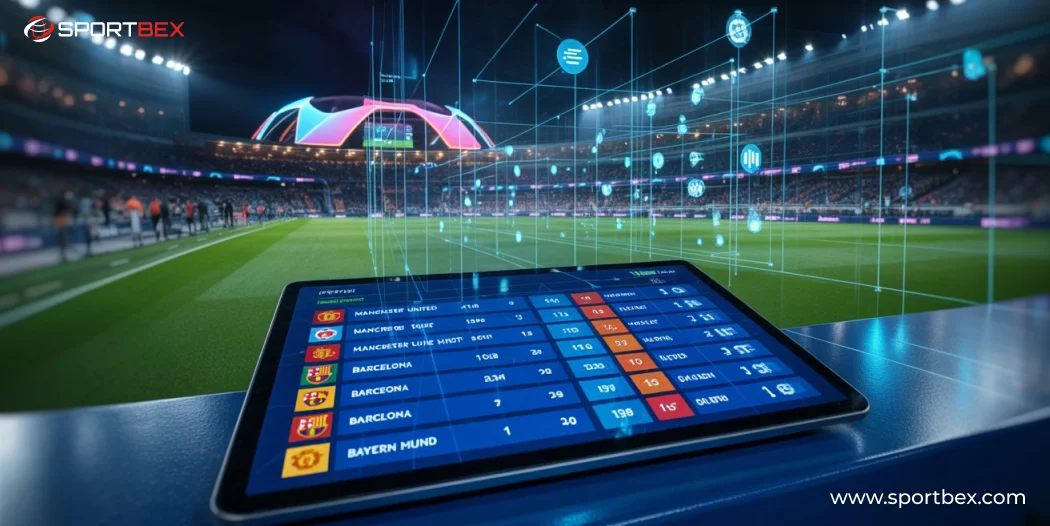Handball is one of the fastest-growing sports in the world, drawing the attention of fans, app developers, and fantasy league players who all want easy and quick access to match data and player stats. This surge in popularity has made Handball API essential tools for delivering live scores, player performance stats, and other critical details in real time.
These APIs enable developers to create interactive experiences, whether it’s building a mobile app for fans, designing an in-depth sports data dashboard, or enhancing a fantasy sports platform with up-to-the-minute updates. By integrating a live scores API, you can significantly improve the user experience, offering accurate and timely information that keeps users engaged.
This guide on How to Use Handball APIs for Live Scores & Real-Time Stats dives into what Handball APIs are, how to select one that fits your needs, and how to effectively use the data they provide. It also includes practical examples of how these APIs can be a game-changer for developers looking to streamline their apps or for sports professionals aiming to analyze performance trends.
With the right API, you can bring an entirely new level of interaction and insight to the growing handball ecosystem.
Understanding Handball APIs
A Handball API is essentially a software interface that allows developers to programmatically access handball match information, including live scores, player statistics, team information, and historical results. A Handball API typically provides endpoints for live match updates, player profiles, and detailed team statistics.
Developers can use these APIs to create applications that display real-time sports data in an engaging, user-friendly manner. Using a Reliable Handball API ensures accuracy, low-latency updates, and comprehensive coverage across leagues and tournaments.
Handball APIs are increasingly used in multiple domains: mobile applications, fantasy sports platforms, betting websites, and sports analytics dashboards. By integrating an API, you reduce manual data collection, ensure data consistency, and enhance your users’ experience with live, actionable insights.
Why Use Handball APIs?
Traditional methods of tracking handball games, like manually updating scores on paper or relying on delayed TV or online broadcasts, can be both time-consuming and prone to errors.
These outdated approaches often fail to provide the real-time accuracy and efficiency needed for fans, teams, and analysts to stay truly engaged. By contrast, using Handball APIs ensures:
- Instant access to Handball live scores.
- Accurate Handball player stats.
- Real-time insights for developers, analysts, and sports enthusiasts.
- Seamless integration with apps, dashboards, or websites.
This efficiency is particularly important for dynamic platforms like fantasy sports leagues, where every point and every play can change the game, or for fast-paced sports betting applications, where users are constantly seeking the most current and accurate information to make their predictions. In these environments, users don’t just demand real-time sports data.
Key Features to Look for in a Handball API

Choosing the perfect Handball stats API for your project is absolutely crucial! It’s not just about getting data; it’s about getting the right data, delivered in a way that truly enhances your application.
Coverage of Leagues and Teams
A high-quality handball API should offer extensive coverage, encompassing a wide array of domestic leagues from various countries, major international tournaments such as the IHF World Championship and the EHF European Championship, and even historical match data stretching back several seasons.
This comprehensive data set is vital as it allows developers to cater to a global audience with diverse interests. By providing detailed information on a broad spectrum of competitions, the API ensures that every fan, regardless of whether they are passionately following the elite EHF Champions League or dedicated to their local national leagues, can consistently access the relevant match details, statistics, and results they seek.
Real-Time Updates and Reliability
A Live scores API needs to provide updates in real-time to meet the high expectations of modern users. Low-latency responses are especially crucial for applications like sports betting platforms, fantasy sports apps, and live dashboards, where even a slight delay can impact user decisions and overall experience.
Reliability is equally important; any downtime or delayed data not only disrupts functionality but can also erode user trust and damage the reputation of the platform. Ensuring a seamless flow of accurate, up-to-the-second information is key to maintaining user engagement and satisfaction in these competitive industries.
Comprehensive Player and Team Stats
The API should offer more than just basic match scores; it needs to provide comprehensive player statistics! Imagine getting detailed insights into individual player performance, including crucial metrics like goals scored, assists made, vital saves, and even fouls committed.
This robust Handball player stats feature, powered by a Sports Data API, is an absolute game-changer! It empowers fantasy sports enthusiasts to draft their dream teams with precision, helps sports analysts delve deeper into game dynamics, and allows coaches to make truly smart, data-driven decisions based on the most up-to-date player data available. It’s all about making informed choices to get ahead in the game!
Easy-to-Use Documentation
The API’s documentation is a critical component for developers looking to integrate the service. It should be comprehensive, detailing all available endpoint descriptions, specifying authentication requirements, providing clear request examples, outlining expected response formats for various queries, and explaining how to handle potential errors.
High-quality documentation not only accelerates the integration process for developers but also significantly reduces the overall development effort and potential frustrations.
Flexible Data Formats and Integration
Support for multiple data formats, such as JSON and XML, ensures the API remains versatile and compatible with a wide range of technology stacks, making it easier for developers to integrate regardless of their platform preferences.
Additionally, providing SDKs or libraries for popular programming languages, such as Python, JavaScript, or Swift, further simplifies the integration process. This enables developers to seamlessly incorporate the API into mobile applications, web-based platforms, or even complex dashboards, reducing development time and effort while ensuring smooth functionality across different environments.
How to Use a Handball API: A Step-by-Step Guide

Using a Handball API effectively isn’t just about plugging it in; it really requires some careful planning and execution to get the most out of it! Here’s a detailed, step-by-step approach:
Step 1: Get an API Key
Most Handball APIs, including the Sportbex API, require you to register and get an API key. This key is super important because it allows you to securely access all the different API endpoints! Think of it like your personal pass to all the valuable data. Make sure you keep your key confidential. Seriously, guard it like a secret because it grants access to some truly sensitive information and capabilities.
Step 2: Review Documentation
Before you dive into integration, make sure you read through the API documentation thoroughly. This is where you’ll find all the juicy details about the endpoints that provide live scores, fascinating player statistics, essential team information, and even historical data. Really take your time to understand the request limits; you don’t want to hit any unexpected walls!
Step 3: Set Up a Development Environment
Choose a tech stack that suits your project needs, such as Node.js, Python, Java, or similar platforms, and ensure you install the necessary libraries or frameworks to handle HTTP requests and process JSON or XML responses effectively.Establish version control and a staging environment to test API calls before production deployment.
Step 4: Fetch Live Scores and Real-Time Stats
Get live match information easily using the API, designed to deliver real-time sports data right at your fingertips. With the API, you’ll typically receive key details like match ID, team names, scores, player stats, and even the exact timestamp when the data was recorded. This is how you get real-time sports data! You can set up the API to get updates all the time.
Step 5. Display Data in Apps or Dashboards
Process the fetched data and present it in a clear, user-friendly format, such as detailed scoreboards, player statistic tables, or visually appealing performance charts. This makes it easier for users to analyze and interpret the information at a glance. Additionally, integrating with Fantasy Sports API platforms can significantly boost user engagement.
Common Use Cases of Handball APIs
Sports Apps: Provide an electrifying experience with real-time Handball live scores, comprehensive Handball player stats, and instant match updates! Users can track their favorite teams and players with up-to-the-minute real-time sports data.
Fantasy Sports: Unleash the excitement of fantasy sports! Use detailed Handball player stats to accurately calculate fantasy points, creating a more engaging and fair game for all participants.
Betting Platforms: Make your betting site better with a strong Sport betting API. It gives you live odds and important game stats. This helps your users make smart bets, which makes them happier and trust your site more.
Analytics Dashboards: Integrate a powerful Sports Data API to craft dynamic analytics dashboards. These dashboards beautifully display team and player performance trends, empowering coaches, analysts, and even dedicated fans to truly grasp the game’s nuances and track progress over time.
Get a Ready-Made Platform On Rent.
Get Started Today
Conclusion
Handball APIs are absolutely fantastic for accessing a treasure trove of information, including live scores, detailed player statistics, and a whole host of other real-time sports data! Imagine effortlessly integrating reliable Handball APIs into your application – it empowers developers, analysts, and even the most passionate fans to quickly and easily access accurate, up-to-the-minute information.
This is incredibly valuable for a variety of uses, from enhancing fantasy sports experiences and fueling informed betting decisions to creating powerful analytics tools. Getting started is a breeze: simply follow a straightforward guide to obtain an API key, dive into the comprehensive documentation, set up your system, fetch those exciting live scores, and proudly display the data for all to see.
With the right setup, a Handball API can truly make your app more engaging and deliver a significantly better, more immersive experience for all handball enthusiasts.
Frequently Asked Questions
Handball API allows for instant access to live scores and player stats, ensuring accurate, real-time data for fans, fantasy sports platforms, betting apps, and analytics dashboards.
Yes, a well-designed Handball API delivers real-time sports data, including live match scores, player stats, and event updates.
Absolutely! Detailed Handball player stats from the API can be used to calculate fantasy points and improve user engagement.
Start by registering with an API provider to obtain your API key, review the documentation, set up your development environment, and fetch data using the provided endpoints.
Most Handball APIs support JSON and XML formats, and many provide SDKs or libraries for popular programming languages like Python, JavaScript, or Java.
Recent Blog
Top 9 Bowlers With Most Wickets In Test Cricket
October 22, 2025
 7 min
7 min
How to Create a Soccer Leaderboard Using API Data
October 22, 2025
 9 min
9 min






